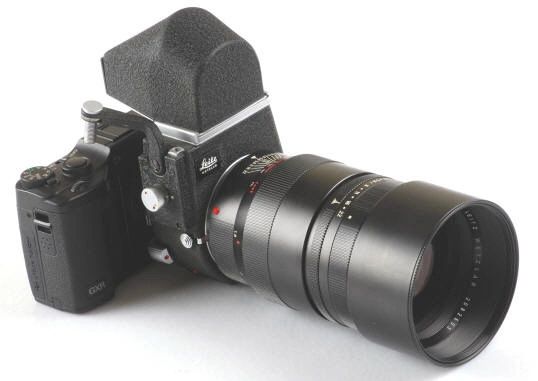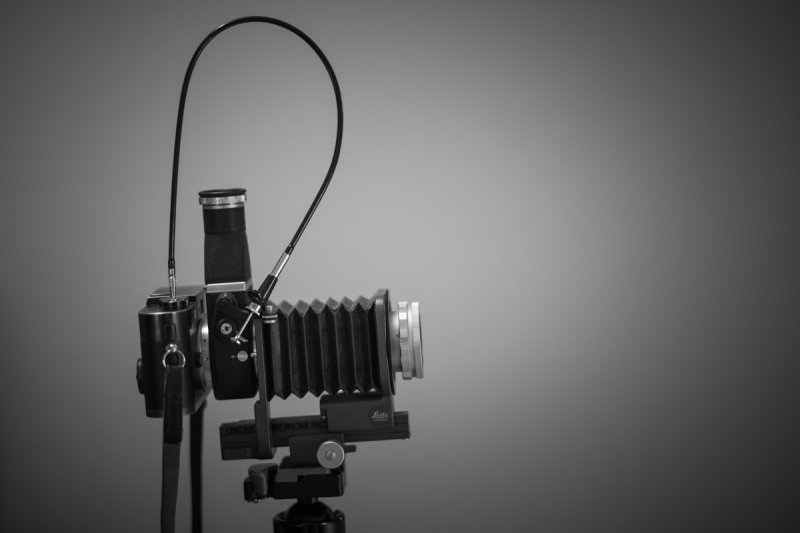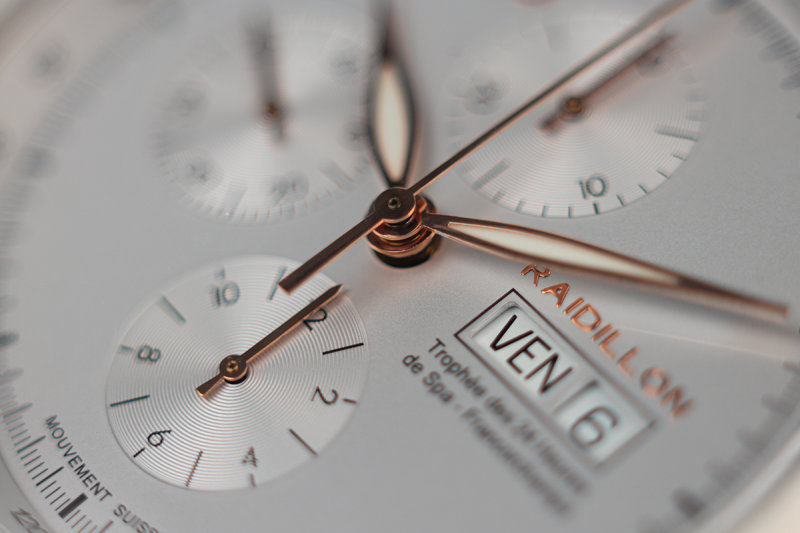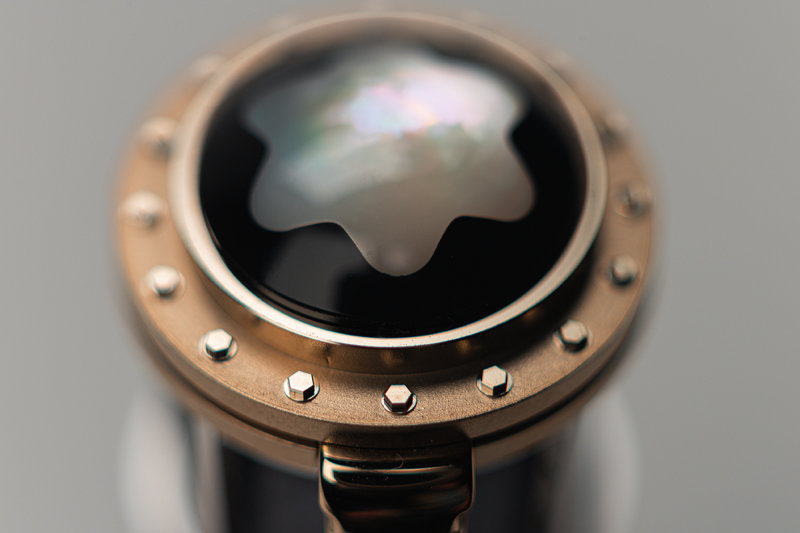Visoflex Lenses on Digital Cameras: A Marriage Made in Heaven!
Robust precision adapters let you access features Leitz never imagined
By Jason Schneider
As I lamented in my last post, The Venerable Visoflex, mounting a Visoflex on a vintage rangefinder Leica instantly transforms your exquisitely contoured, compact classic 35 into a large, heavy, clunky “SLR” that might be challenging and fun to shoot with but is certainly not the last word in convenience or practicality. The other nagging problem with the Visoflex is that almost every Visoflex lens requires a special adapter for any particular lens/camera combo, and since the entire system is long discontinued, finding the proper one can be tough and is likely to be fairly expensive—sometimes costing more than the Visoflex itself!
What about mounting a Visoflex on a digital camera? You can mount a Visoflex III on a digital Leica M (a Leitz adapter may be needed to focus some lenses to infinity) and experience the joys of optical focusing on a ground glass screen, or you can mount a Visoflex on a compact mirrorless camera such as a Sony, Fuji, or the late lamented Ricoh GXR shown here with a super-rare 180mm f/2.8 Leitz Tele-Elmarrit, by adding the appropriate Leica M adapter for your camera. The reward: you can now use both Live View and SLR-type viewing and focusing.

Rare 180mm f/2.8 Leitz Tele-Elmarit on a Visoflex III is shown mounted on an ultra-compact Ricoh GXR. Conceived by Leitz, New York, it was marketed to photojournalist associations because of its speed and reach.
However, by far the easiest way to use the superb Leitz legacy lenses designed for the Visoflex (as well as the outstanding detachable rangefinder lens heads that mount on the Visoflex) is to bypass the Visoflex entirely and use a Visoflex Lens Adapter to mount the lens directly on your digital camera. A big bonus: These adapters let you access many advanced features built into your digital marvel that the Visoflex designers couldn’t have dreamed of. They include spot, multi-zone, and aperture-priority metering at shooting aperture, TTL flash at high sync speeds, burst rates up to 30 fps, and of course an LCD or EVF that automatically boosts the gain so viewing brightness is maintained when the lens is stopped down or under dim lighting conditions. And speaking of low light, these cameras let you shoot at sensitivity settings up to ISO 150000 and beyond.

Rayqual Visoflex Lens Adapter for Leica M240/M10 lets you mount Viso lenses on a wide variety of digital cameras via readily available intermediate adapters.
Although Visoflex adapters are offered by Novoflex (well-made but expensive) and various Asian adapter companies (less expensive but generally mediocre), the best in terms of precision, quality, durability and price are the Rayqual Leica Visoflex adapters offered by (who else?) CameraQuest. They offer 5 types that allow Visoflex lenses to be used directly on Canon EOS, Nikon F, Fuji FX, and Sony E-mount bodies at $199,00 and another for Leica M240/M10 bodies at $149.00. Any one of these adapters can be combined with another to mount on yet another brand of camera, providing true Frankenstein versatility. The most versatile of all is the M-adapter that can yield the following enticing digital possibilities: M to L-mount, Nikon Z-mount, Canon R-mount, Canon M-mount, and of course Micro FourThirds mount.

Rayqual Visoflex lens adapter for Canon EOS cameras provides access to different arrays of advanced features depending on the specific model.
An array of outstanding Visoflex optics
Some of the most exciting high-performance lenses in the Leitz Visoflex lens line are the 180mm f/2.8 Tele-Elmarit, a high-speed telephoto that’s a stellar choice for sports and nature photography, the acclaimed 400mm f/6.8 Telyt that’s light and well balanced enough for handheld shooting, and the 400mm f/5 Telyt, an exceptional performer that offers speed as well as reach. Other superb short mount Visoflex lenses include the renowned 65mm f/3.5 Elmar, the shortest Viso lens that focuses to infinity, the classic 125mm f/2.5 Hektor, the venerable 200mm f/4.5 Telyt first introduced in uncoated form in the mid ‘30s, the 400mm f/5.6, 400mm f/6.8, 560mm f/5.6, 560mm f/6.8, and the impressive 800mm f/6.3 Telyt, the longest and largest of the bunch. All these magnificent lenses are unsurpassed in terms of image quality and beautiful natural rendition.

Ultra-rare 180mm f/2.8 Leitz Tele-Elmarit in Visoflex mount was introduced in March 1965 and evidently only 300 examples were made at the time.

Classic 125mm f/2.5 Hektor in screw mount for Visoflex was introduced in the 1950s. It's a great lens with lots of vintage character.
The lens heads from older versions of the 90mm f/4 Elmar, 90mm f/2.8 Elmarit and 90mm f/2 Summicron can unscrew from their rangefinder coupled focusing barrels and attach to a Visoflex focusing helical or bellows, sometimes via an intermediate connecting adapter. All are prized by Visoflex users and can now mount directly on most modern digital cameras. Other detachable Leitz lens heads include the rare but highly esteemed 125mm f/2.5 Hektor, the 135mm f/4 Elmar, 135mm f/4 Tele Elmar, 135mmm f/4.5 Elmar. 135mm f/4.5 Hektor, and 135mm f/2.8 Tele-Elmarit. All these legacy lenses are capable of yielding distinctive high-quality images that combine real vintage character with outstanding sharpness and clarity. The fact that they can now be used seamlessly on virtually all the latest digital cameras while providing many of the latest modern conveniences is truly a miracle of “back to the future” modern technology.

Rare 500mm f/5.6 Leitz Telyt for Visoflex combines speed and reach. It's really best atop a tripod but some intrepid souls have used it handheld with a grip.
Robust precision adapters let you access features Leitz never imagined
By Jason Schneider
As I lamented in my last post, The Venerable Visoflex, mounting a Visoflex on a vintage rangefinder Leica instantly transforms your exquisitely contoured, compact classic 35 into a large, heavy, clunky “SLR” that might be challenging and fun to shoot with but is certainly not the last word in convenience or practicality. The other nagging problem with the Visoflex is that almost every Visoflex lens requires a special adapter for any particular lens/camera combo, and since the entire system is long discontinued, finding the proper one can be tough and is likely to be fairly expensive—sometimes costing more than the Visoflex itself!
What about mounting a Visoflex on a digital camera? You can mount a Visoflex III on a digital Leica M (a Leitz adapter may be needed to focus some lenses to infinity) and experience the joys of optical focusing on a ground glass screen, or you can mount a Visoflex on a compact mirrorless camera such as a Sony, Fuji, or the late lamented Ricoh GXR shown here with a super-rare 180mm f/2.8 Leitz Tele-Elmarrit, by adding the appropriate Leica M adapter for your camera. The reward: you can now use both Live View and SLR-type viewing and focusing.

Rare 180mm f/2.8 Leitz Tele-Elmarit on a Visoflex III is shown mounted on an ultra-compact Ricoh GXR. Conceived by Leitz, New York, it was marketed to photojournalist associations because of its speed and reach.
However, by far the easiest way to use the superb Leitz legacy lenses designed for the Visoflex (as well as the outstanding detachable rangefinder lens heads that mount on the Visoflex) is to bypass the Visoflex entirely and use a Visoflex Lens Adapter to mount the lens directly on your digital camera. A big bonus: These adapters let you access many advanced features built into your digital marvel that the Visoflex designers couldn’t have dreamed of. They include spot, multi-zone, and aperture-priority metering at shooting aperture, TTL flash at high sync speeds, burst rates up to 30 fps, and of course an LCD or EVF that automatically boosts the gain so viewing brightness is maintained when the lens is stopped down or under dim lighting conditions. And speaking of low light, these cameras let you shoot at sensitivity settings up to ISO 150000 and beyond.

Rayqual Visoflex Lens Adapter for Leica M240/M10 lets you mount Viso lenses on a wide variety of digital cameras via readily available intermediate adapters.
Although Visoflex adapters are offered by Novoflex (well-made but expensive) and various Asian adapter companies (less expensive but generally mediocre), the best in terms of precision, quality, durability and price are the Rayqual Leica Visoflex adapters offered by (who else?) CameraQuest. They offer 5 types that allow Visoflex lenses to be used directly on Canon EOS, Nikon F, Fuji FX, and Sony E-mount bodies at $199,00 and another for Leica M240/M10 bodies at $149.00. Any one of these adapters can be combined with another to mount on yet another brand of camera, providing true Frankenstein versatility. The most versatile of all is the M-adapter that can yield the following enticing digital possibilities: M to L-mount, Nikon Z-mount, Canon R-mount, Canon M-mount, and of course Micro FourThirds mount.

Rayqual Visoflex lens adapter for Canon EOS cameras provides access to different arrays of advanced features depending on the specific model.
An array of outstanding Visoflex optics
Some of the most exciting high-performance lenses in the Leitz Visoflex lens line are the 180mm f/2.8 Tele-Elmarit, a high-speed telephoto that’s a stellar choice for sports and nature photography, the acclaimed 400mm f/6.8 Telyt that’s light and well balanced enough for handheld shooting, and the 400mm f/5 Telyt, an exceptional performer that offers speed as well as reach. Other superb short mount Visoflex lenses include the renowned 65mm f/3.5 Elmar, the shortest Viso lens that focuses to infinity, the classic 125mm f/2.5 Hektor, the venerable 200mm f/4.5 Telyt first introduced in uncoated form in the mid ‘30s, the 400mm f/5.6, 400mm f/6.8, 560mm f/5.6, 560mm f/6.8, and the impressive 800mm f/6.3 Telyt, the longest and largest of the bunch. All these magnificent lenses are unsurpassed in terms of image quality and beautiful natural rendition.

Ultra-rare 180mm f/2.8 Leitz Tele-Elmarit in Visoflex mount was introduced in March 1965 and evidently only 300 examples were made at the time.

Classic 125mm f/2.5 Hektor in screw mount for Visoflex was introduced in the 1950s. It's a great lens with lots of vintage character.
The lens heads from older versions of the 90mm f/4 Elmar, 90mm f/2.8 Elmarit and 90mm f/2 Summicron can unscrew from their rangefinder coupled focusing barrels and attach to a Visoflex focusing helical or bellows, sometimes via an intermediate connecting adapter. All are prized by Visoflex users and can now mount directly on most modern digital cameras. Other detachable Leitz lens heads include the rare but highly esteemed 125mm f/2.5 Hektor, the 135mm f/4 Elmar, 135mm f/4 Tele Elmar, 135mmm f/4.5 Elmar. 135mm f/4.5 Hektor, and 135mm f/2.8 Tele-Elmarit. All these legacy lenses are capable of yielding distinctive high-quality images that combine real vintage character with outstanding sharpness and clarity. The fact that they can now be used seamlessly on virtually all the latest digital cameras while providing many of the latest modern conveniences is truly a miracle of “back to the future” modern technology.

Rare 500mm f/5.6 Leitz Telyt for Visoflex combines speed and reach. It's really best atop a tripod but some intrepid souls have used it handheld with a grip.












